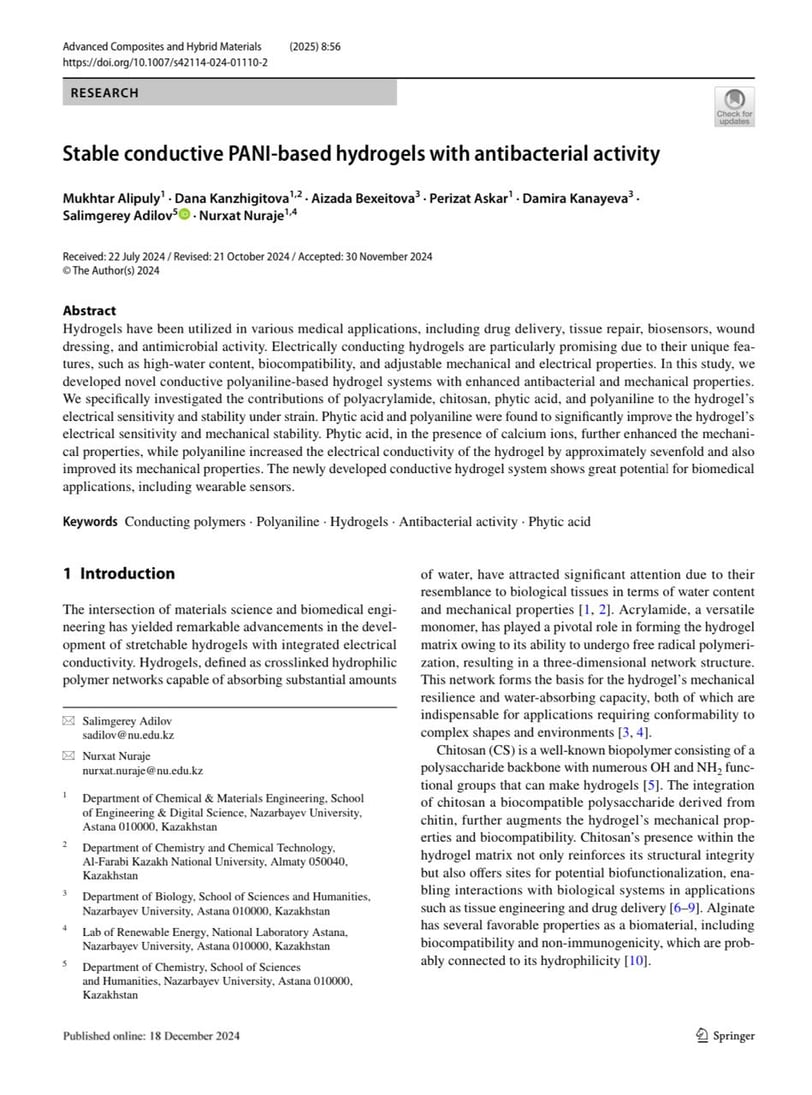Stable conductive PANI‑based hydrogels with antibacterial activity
This Paper of the Day article discusses the development of stable, conductive, and antibacterial hydrogels by combining polyacrylamide, chitosan, phytic acid, and polyaniline. The key findings are Phytic acid plays a crucial role as a crosslinker, improving the mechanical strength and stability of the hydrogels. It also acts as a dopant to increase the electrical conductivity of the hydrogels. The incorporation of polyaniline into the hydrogel matrix further enhances the electrical conductivity, with a 6-fold increase compared to hydrogels without polyaniline. The optimal ratio of phytic acid to water (7.5:2.5) resulted in hydrogels with the best combination of conductivity, mechanical strength, and antibacterial activity against both gram-positive and gram-negative bacteria. The antibacterial properties of the hydrogels are attributed to the presence of phytic acid, which can be hindered by the interactions between the various components in the hydrogel.


